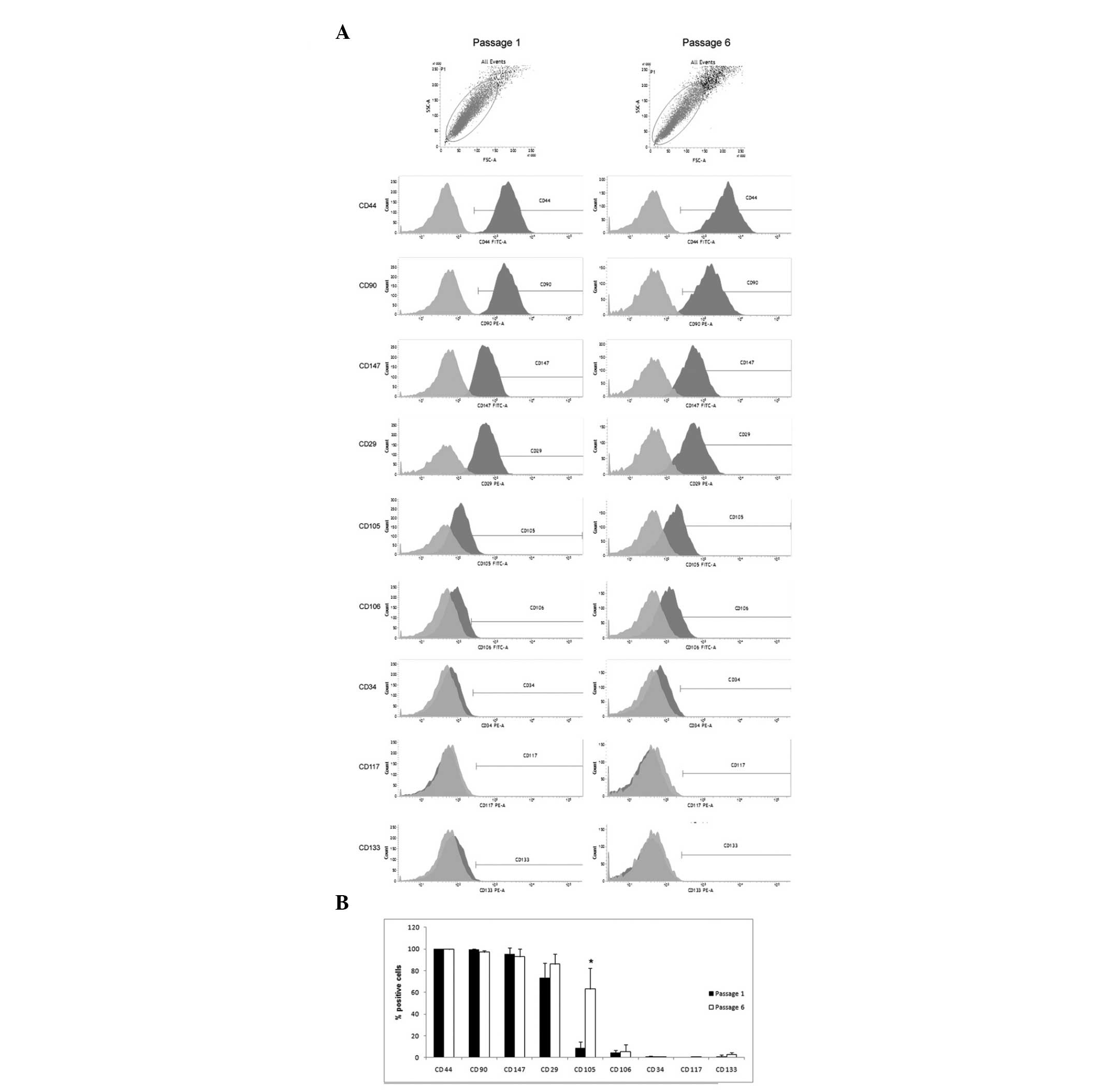|
1
|
Priest RE, Marimuthu KM and Priest JH:
Origin of cells in human amniotic fluid cultures: ultrastructural
features. Lab Invest. 39:106–109. 1978.PubMed/NCBI
|
|
2
|
Macek M, Hurych J, Hyánek J, et al:
Cultivation of amniotic fluid cells and prenatal diagnosis. Cesk
Gynekol. 36:556–558. 1971.(In Czech).
|
|
3
|
Mulcahy MT and Jenkyn J: Prenatal
diagnosis. Results of cytogenetic analysis of amniotic fluid cell
cultures. Med J Aust. 1:979–982. 1973.PubMed/NCBI
|
|
4
|
Macek M, Suk V, Bresták M, Rezácová D,
Houstĕk J and Kotásek A: Cultivation of cells from amniotic fluid
for prenatal diagnosis. Cesk Pediatr. 29:87–89. 1974.(In
Czech).
|
|
5
|
Zolotukhina TV: Amniotic fluid cell
culture for the prenatal diagnosis of the fetal karyotype. Tsitol
Genet. 14:57–63. 1980.(In Russian).
|
|
6
|
Lapierre JM, Cacheux V, Collot N, et al:
Comparison of comparative genomic hybridization with conventional
karyotype and classical fluorescence in situ hybridization for
prenatal and postnatal diagnosis of unbalanced chromosome
abnormalities. Ann Genet. 41:133–140. 1998.
|
|
7
|
Guven MA, Ceylaner G and Coskun A: Volume
of sampled amniotic fluid and prenatal cytogenetic diagnosis. Int J
Gynaecol Obstet. 95:157–158. 2006. View Article : Google Scholar : PubMed/NCBI
|
|
8
|
Rebello MT, Hackett G, Smith J, et al:
Extraction of DNA from amniotic fluid cells for the early prenatal
diagnosis of genetic disease. Prenat Diagn. 11:41–46. 1991.
View Article : Google Scholar : PubMed/NCBI
|
|
9
|
Polgár K, Adány R, Abel G, Kappelmayer J,
Muszbek L and Papp Z: Characterization of rapidly adhering amniotic
fluid cells by combined immunofluorescence and phagocytosis assays.
Am J Hum Genet. 45:786–792. 1989.PubMed/NCBI
|
|
10
|
In ‘t Anker PS, Scherjon SA, Kleijburg-van
der Keur C, et al: Amniotic fluid as a novel source of mesenchymal
stem cells for therapeutic transplantation. Blood. 102:1548–1549.
2003.PubMed/NCBI
|
|
11
|
De Coppi P, Bartsch G Jr, Siddiqui MM, et
al: Isolation of amniotic stem cell lines with potential for
therapy. Nat Biotechnol. 25:100–106. 2007.PubMed/NCBI
|
|
12
|
Li C, Zhou J, Shi G, et al: Pluripotency
can be rapidly and efficiently induced in human amniotic
fluid-derived cells. Hum Mol Genet. 18:4340–4349. 2009. View Article : Google Scholar : PubMed/NCBI
|
|
13
|
Fan Y, Luo Y, Chen X, Li Q and Sun X:
Generation of human β-thalassemia induced pluripotent stem cells
from amniotic fluid cells using a single excisable lentiviral stem
cell cassette. J Reprod Dev. 58:404–409. 2012.
|
|
14
|
Li Q, Fan Y, Sun X and Yu Y: Generation of
induced pluripotent stem cells from human amniotic fluid cells by
reprogramming with two factors in feeder-free conditions. J Reprod
Dev. 59:72–77. 2013.PubMed/NCBI
|
|
15
|
Mirabella T, Cilli M, Carlone S, Cancedda
R and Gentili C: Amniotic liquid derived stem cells as reservoir of
secreted angiogenic factors capable of stimulating
neo-arteriogenesis in an ischemic model. Biomaterials.
32:3689–3699. 2011. View Article : Google Scholar : PubMed/NCBI
|
|
16
|
Mirabella T, Poggi A, Scaranari M, et al:
Recruitment of host’s progenitor cells to sites of human amniotic
fluid stem cells implantation. Biomaterials. 32:4218–4227.
2011.
|
|
17
|
Lu HE, Yang YC, Chen SM, et al: Modeling
neurogenesis impairment in Down syndrome with induced pluripotent
stem cells from trisomy 21 amniotic fluid cells. Exp Cell Res.
319:498–505. 2013. View Article : Google Scholar : PubMed/NCBI
|
|
18
|
Hoehn H, Bryant EM, Karp LE and Martin GM:
Cultivated cells from diagnostic amniocentesis in second trimester
pregnancies. I Clonal morphology and growth potential. Pediatr Res.
8:746–754. 1974. View Article : Google Scholar : PubMed/NCBI
|
|
19
|
Hoehn H, Bryant EM, Fantel AG and Martin
GM: Cultivated cells from diagnostic amniocentesis in second
trimester pregnancies. III The fetal urine as a potential source of
clonable cells. Humangenetik. 29:285–290. 1975.PubMed/NCBI
|
|
20
|
Hoehn H, Bryant EM, Karp LE and Martin GM:
Cultivated cells from diagnostic amniocentesis in second trimester
pregnancies. II Cytogenetic parameters as functions of clonal type
and preparative technique. Clin Genet. 7:29–36. 1975. View Article : Google Scholar : PubMed/NCBI
|
|
21
|
Davydova DA, Vorotelyak EA, Smirnova YA,
et al: Cell phenotypes in human amniotic fluid. Acta Naturae.
1:98–103. 2009.PubMed/NCBI
|
|
22
|
Cananzi M and De Coppi P: CD117(+)
amniotic fluid stem cells: state of the art and future
perspectives. Organogenesis. 8:77–88. 2012. View Article : Google Scholar : PubMed/NCBI
|
|
23
|
Bossolasco P, Montemurro T, Cova L, et al:
Molecular and phenotypic characterization of human amniotic fluid
cells and their differentiation potential. Cell Res. 16:329–336.
2006. View Article : Google Scholar : PubMed/NCBI
|













